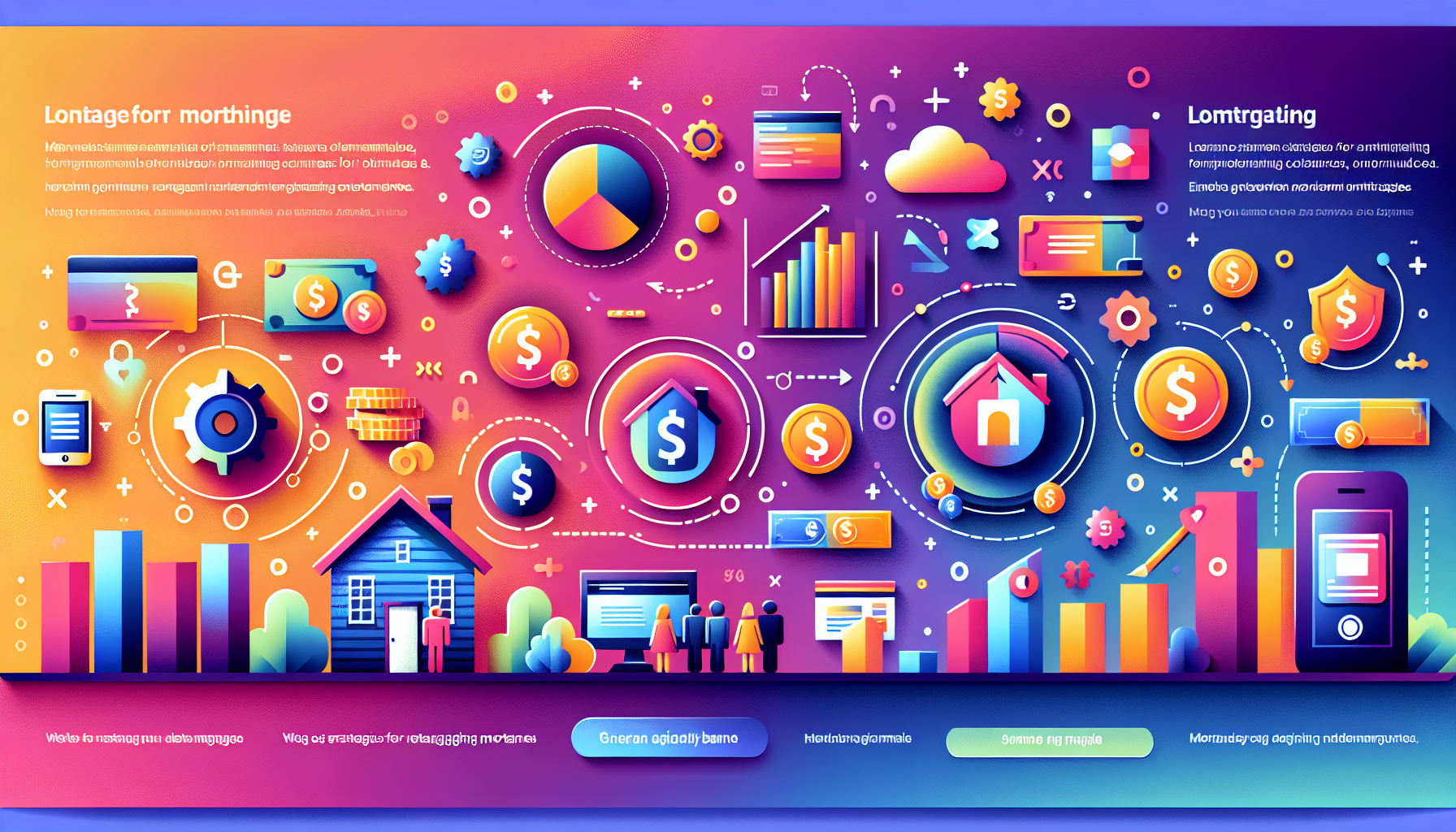Winning Strategies for Retargeting Mortgage Website Visitors

In the competitive world of mortgage lending, capturing the attention of potential customers is crucial. Many individuals visit mortgage websites, explore information, but often don't take immediate action. This is where retargeting strategies come into play, helping to re-engage these visitors and convert them into leads. Retargeting involves using cookies or pixels to track users who have visited your site and serve them relevant ads across the web, social media, and email. Let's dive into some effective strategies for retargeting mortgage website visitors.
Understanding Retargeting
Retargeting is a powerful tool for building brand awareness and encouraging users to take the next step in their mortgage journey. It is especially useful for industries like mortgage and real estate, where decisions are often made after extensive research. For instance, a homeowner looking to refinance might browse multiple sites but leave without contacting anyone. Retargeting allows you to reach them again with targeted ads that resonate with their interests.
Setting Up Retargeting Campaigns
To implement retargeting effectively, you need to set up a tracking pixel on your website. This pixel lets you track visitors and serve them personalized ads across various platforms. For example, if someone visits your mortgage calculator page but doesn't proceed to contact you, you can retarget them with ads highlighting your expertise and the benefits of working with you. This approach helps remind potential customers of your brand and encourages them to reconsider their decision.
Retargeting Platforms
- Website Retargeting: By placing a pixel on your site, you can target users who have visited specific pages. For instance, if a user visits your mortgage calculator, you can retarget them with ads about your mortgage services.
- Social Media Retargeting: Platforms like Facebook and LinkedIn offer powerful retargeting tools. You can create custom audiences based on website visitors or email subscribers and craft compelling ad content that addresses their specific pain points and needs in the mortgage process. For example, you can target users who have shown interest in refinancing or home purchasing.
- Email Remarketing: Email is another effective channel for retargeting. By sending personalized follow-up emails to those who have interacted with your previous emails or visited your website, you can keep yourself top of mind until the time is right. This approach can be automated, making it efficient for continuous engagement.
Crafting Effective Retargeting Ads
Crafting effective retargeting ads requires understanding your target audience's needs and pain points. Here are some tips:
- Personalization: Tailor your ads to resonate with the specific interests and actions of your visitors. If a user has looked at your mortgage rates page, you can retarget them with ads comparing rates or highlighting special offers.
- Compelling Content: Use clear, concise language that communicates the benefits of your services. For instance, emphasize how your mortgage solutions can save them money or simplify the home-buying process.
- Visuals: Incorporate engaging visuals that capture attention. Use images or videos that showcase happy homeowners or successful refinancing stories.
Real-World Examples and Case Studies
- Case Study: Mortgage Broker Retargeting Campaign
- A mortgage broker used retargeting to target users who visited their loan calculator but didn't convert. By serving ads highlighting low interest rates and personalized service, they increased conversions by 20%.
- Case Study: Real Estate Retargeting
- A real estate company targeted users who browsed property listings but didn't make an inquiry. By retargeting them with ads featuring exclusive listings and offers, they saw a 15% increase in inquiries.
Implementing a Retargeting Funnel
A retargeting funnel is a structured approach to guiding users through the various stages of their mortgage journey. Here's how you can implement one:
- Awareness Stage: Target users who have visited your website but haven't interacted further. Use ads to remind them of your brand and services.
- Consideration Stage: Target users who have shown interest but haven't taken action. Use content-rich ads that provide value and insights into the mortgage process.
- Conversion Stage: Target users who are ready to apply or have applied but haven't finalized. Use personalized ads to encourage them to complete the process.
Tools and Resources
- Google Ads: Offers powerful tools for setting up retargeting campaigns. You can create ads that target specific audiences across Google's network.
- Facebook Ads: Provides extensive retargeting options for targeting users across Facebook and Instagram. You can set up campaigns tailored to your audience.
- WP Ultimate Loan & Mortgage Calculator: Enhance your website with engaging tools like mortgage calculators to attract and retain visitors. This can improve your retargeting efforts by providing valuable content that keeps users engaged.
Conclusion and Next Steps
Retargeting is a critical strategy for mortgage websites to capture and convert leads. By setting up effective retargeting campaigns across various platforms, you can increase brand awareness, drive engagement, and ultimately boost conversions. If you're looking to enhance your mortgage marketing strategy, consider exploring more innovative approaches like content marketing and pay-per-click advertising. For more insights and to improve your digital presence, feel free to explore our resources or contact us for personalized advice. Additionally, you can explore other resources like Kaleidico's mortgage marketing strategies for more inspiration and ideas.
By leveraging these strategies, you can create a robust retargeting funnel that drives results for your mortgage business.











